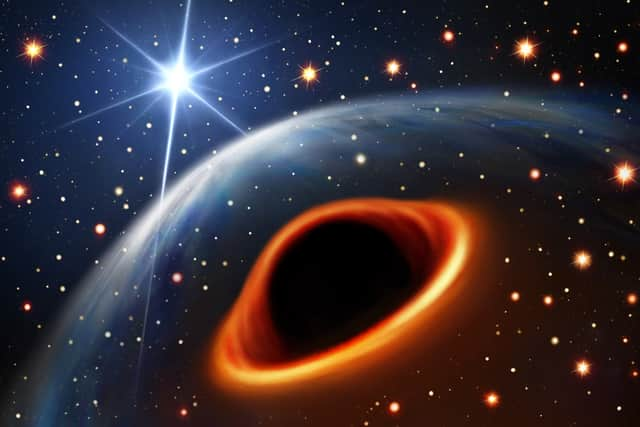Manchester scientists help discover ‘exciting’ object in Milky Way - which could be one of two things
and live on Freeview channel 276
A team of scientists at the University of Manchester have helped to make an exciting discovery in our Milky Way. The problem at this point is, they’re not yet positive what it is exactly.
The scientists from the university are part of an international team of astronomers. The object was spotted using the MeerKAT Radio Telescope, an estimated 40,000 light years away in a group of stars known as a globular cluster.
Advertisement
Hide AdAdvertisement
Hide AdEarly indications from the scientists group's research has shown it is either a light black hole or a heavy neutron star. Whatever the outcome, it is set to be an exciting discovery for the team partially based in Manchester.
The team have said that they cannot conclusively say whether they have discovered the most massive neutron star known, the lightest black hole known or even some new exotic star variant. However, they have summarised that they have uncovered a unique laboratory for probing the properties of matter under the most extreme conditions in the Universe.


The discovery of the object was made while observing a large cluster of stars known as NGC 1851 located in the southern constellation of Columba, using the MeerKAT telescope. The globular cluster NGC 1851 is a dense collection of old stars that are much more tightly packed than the stars in the rest of the Galaxy. Here, it is so crowded that the stars can interact with each other, disrupting orbits and in the most extreme cases colliding.
UK project lead Ben Stappers, who is Professor of Astrophysics at The University of Manchester, said: “Either possibility for the nature of the companion is exciting. A pulsar–black hole system will be an important target for testing theories of gravity and a heavy neutron star will provide new insights in nuclear physics at very high densities.
Advertisement
Hide AdAdvertisement
Hide Ad“The ability of the extremely sensitive MeerKAT telescope to reveal and study these objects is a great step forward and provides us with a glimpse of what will be possible with the Square Kilometre Array."
Comment Guidelines
National World encourages reader discussion on our stories. User feedback, insights and back-and-forth exchanges add a rich layer of context to reporting. Please review our Community Guidelines before commenting.
